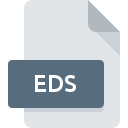.EDS File Extension

Ensoniq SQ-80 Disk Image
| Developer | Ensoniq |
| Popularity | |
| Category | Disk Image Files |
| Format | .EDS |
| Cross Platform | Update Soon |
What is an EDS file?
The .EDS file extension is associated with disk image files used by the Ensoniq SQ-80 synthesizer.
The Ensoniq SQ-80, introduced in the late 1980s, was a digital synthesizer known for its advanced features and distinctive sound. The .EDS file format is specifically designed to store and manage data from this synthesizer, particularly sound patches and system settings.
As a disk image format, .EDS files contain a snapshot of the data stored on a floppy disk used by the SQ-80, allowing users to preserve and transfer their custom sound designs and system configurations.
More Information.
The Ensoniq SQ-80 was designed to address the needs of musicians who required a versatile synthesizer with advanced sound design capabilities. With its capability to store custom patches, sequences, and system settings on floppy disks, the SQ-80 provided a way to manage complex sound setups and make them portable.
The .EDS file format was created to represent the data stored on these disks, ensuring that users could back up their work and transfer it to other SQ-80 units.
This format became an integral part of the SQ-80’s workflow, allowing musicians to manage their sound libraries effectively.
Origin Of This File.
The .EDS file extension originated from the need to manage and store data for the Ensoniq SQ-80 synthesizer.
Ensoniq, an American company founded in 1982, was known for its innovative electronic musical instruments.
The SQ-80, released in 1987, was one of their flagship products, offering a unique combination of digital synthesis and sampling. To facilitate the transfer and preservation of data, Ensoniq developed the .EDS format as a way to create disk images of the SQ-80’s internal data.
This allowed users to back up their data, share sound patches, and transfer configurations between devices.
File Structure Technical Specification.
The .EDS file format is essentially a disk image that mirrors the data on a floppy disk used by the Ensoniq SQ-80. The file structure of .EDS files includes several key components:
- Header Information: This section contains metadata about the disk image, such as the disk label, the number of tracks, and other relevant details.
- Data Tracks: The .EDS file includes data tracks that represent the content of the floppy disk. Each track corresponds to a specific section of the disk, including sound patches, sequences, and system settings.
- File Allocation Table (FAT): The FAT within the .EDS file manages the allocation of space on the virtual disk, ensuring that data is organized and accessible.
- Sound Patches and System Data: The core content of the .EDS file includes the sound patches created by users, as well as system configurations and settings. This data is essential for reproducing the exact sound environment of the Ensoniq SQ-80.
How to Convert the File?
Converting .EDS files can be challenging due to their specific association with the Ensoniq SQ-80. There are no direct conversion tools available for transforming .EDS files into other formats.
Users can employ the following methods to work with .EDS files:
- Use Ensoniq SQ-80 Software: The most straightforward method is to use Ensoniq’s proprietary software or utilities that support .EDS files. These tools can help read and manage the data within .EDS files directly on an SQ-80 or compatible emulator.
- Floppy Disk Emulators: Some modern floppy disk emulators or hardware interfaces might support .EDS files, allowing users to transfer data to and from physical floppy disks.
- Manual Extraction: Advanced users may choose to manually extract data from .EDS files by analyzing their structure and using hex editors. This approach requires technical expertise and is generally not recommended for casual users.
Advantages And Disadvantages.
Advantages:
- Data Preservation: The .EDS file format allows users to preserve their sound patches and system settings, ensuring that their custom configurations are not lost over time.
- Portability: By creating disk images, users can easily transfer their data between different SQ-80 units, facilitating collaboration and sharing of sound designs.
- Backup Solution: The .EDS format provides a reliable method for backing up important data from the SQ-80, protecting against data loss due to hardware failure or other issues.
Disadvantages:
- Limited Compatibility: The .EDS format is specific to the Ensoniq SQ-80, meaning that it is not widely supported by other software or hardware. This limits the ability to use .EDS files outside of the Ensoniq ecosystem.
- Obsolescence: As the Ensoniq SQ-80 is no longer in production, the relevance of the .EDS file format has diminished over time. Finding compatible hardware or software to work with .EDS files can be challenging.
- File Size: Depending on the amount of data stored, .EDS files can become quite large, which may pose storage and transfer issues for users.
How to Open EDS?
Open In Windows
- Ensoniq Software: Use any available Ensoniq SQ-80 software or utilities that support .EDS files.
- Disk Emulators: Employ floppy disk emulators or software that can read .EDS files if compatible with Windows.
Open In Linux
- Command-Line Tools: Advanced users might use command-line tools to analyze and extract data from .EDS files. This approach requires familiarity with Linux and file system management.
- Emulators: Look for any available Ensoniq SQ-80 emulators or disk image tools that run on Linux.
Open In MAC
- Emulation Software: Use emulators that support the Ensoniq SQ-80 if available for macOS. Some third-party software may offer limited support for .EDS files.
- Cross-Platform Tools: Explore cross-platform tools or utilities that may offer partial support for .EDS files.













